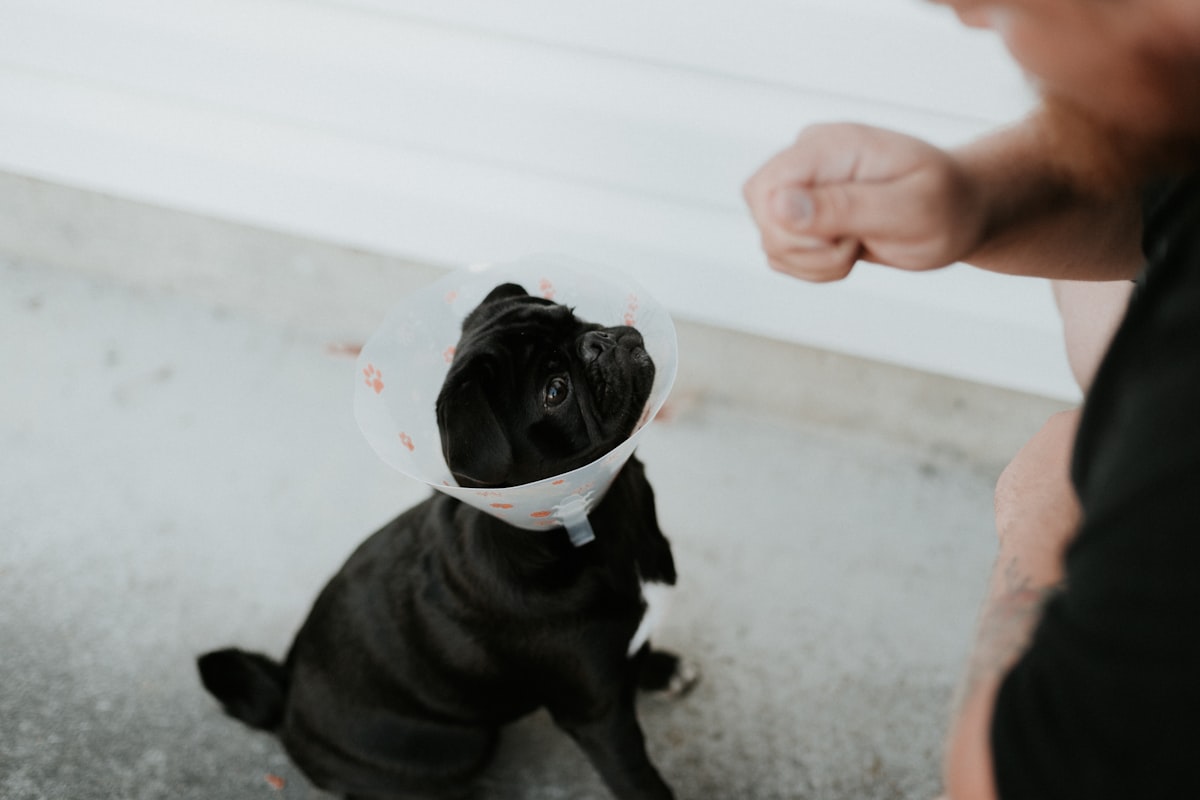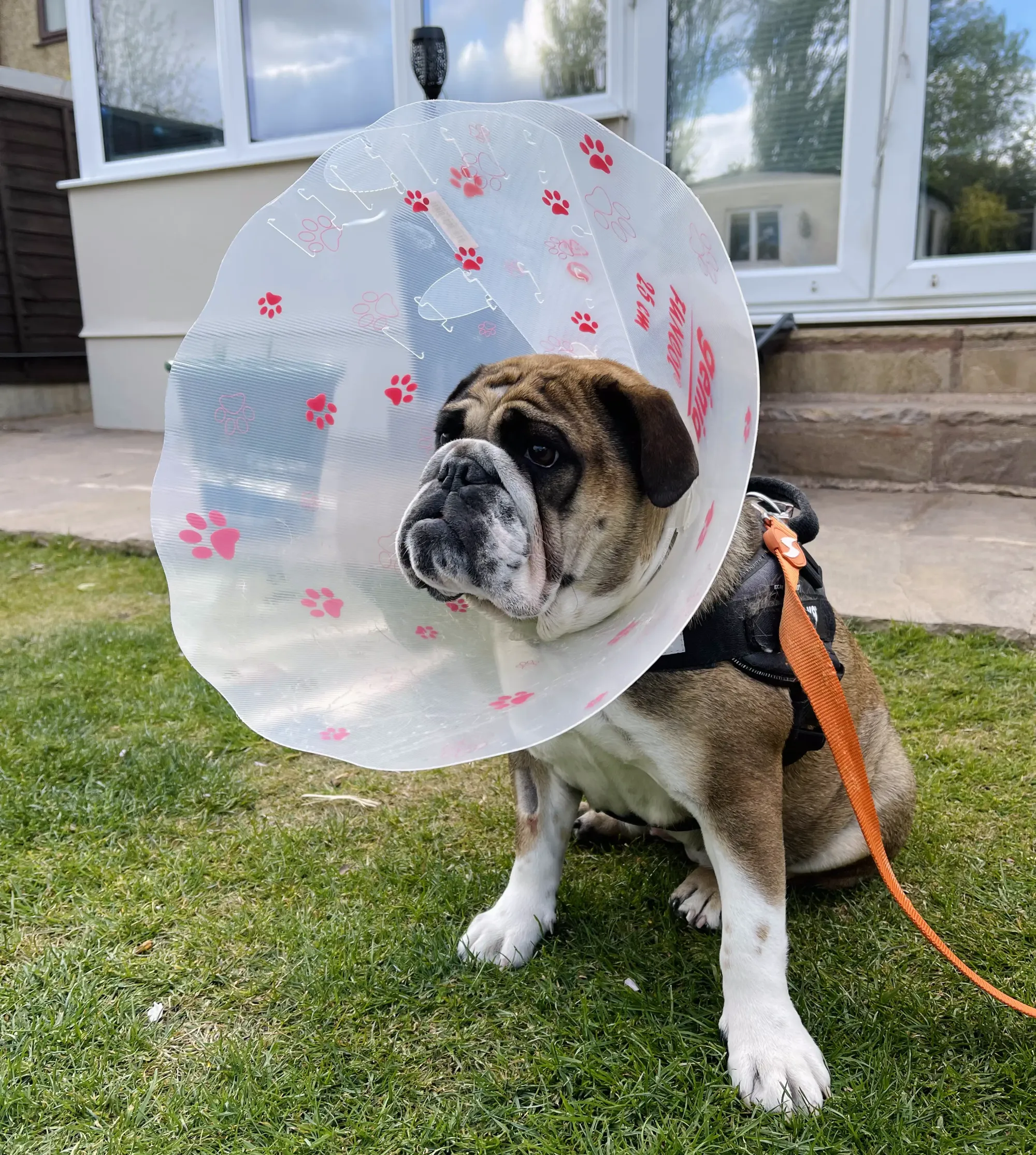What's the Difference Between Spaying and Neutering?
The answer is really simple

Are you deciding whether to spay or neuter your dog?
It's the dreaded question every new dog dad needs to face, and frankly, it's a really serious one. After all, you're making a lifelong change for your pup.
In this article, we'll examine the difference between spaying and neutering, and the benefits and I'll share my own reflections on this really difficult question too.
So let's dive in.
What's the difference between spaying and neutering?
Spaying and neutering are the terms used for the surgical sterilization procedures which stop a dog from reproducing. Both spaying and neutering are done under general anaesthetic and in a veterinary practice.
What is a dog spaying?
A spay is a name given for the surgery carried out on female or bitch dogs. The ovaries and sometimes the womb (uterus) are removed - meaning your dog will no longer be able to get pregnant or have seasons.
What is dog neutering?
Neuter or castration is a name given for the surgery carried out on male dogs. The testicles are removed which is the main source of the testosterone hormone and sperm used for conceiving.
Related: 5 things every future dog owner needs to know
Are there any benefits to spaying and neutering?
Both procedures provide a range of benefits for both you and your dog, including keeping your dog healthy and happy.
Stops overpopulation
There are thousands of unwanted dogs in the UK, the dog shelters are always filled to the brim with dogs looking for homes. Neutering your dog is a great step toward keeping the number of rescue dogs as low as possible.
Reduced cancer risk
The risk of cancer in the ovaries or testicles is naturally reduced as by definition they are removed with this surgery. Plus for female dogs who are spayed at a young age, this also greatly reduces the risk of breast cancer too.
Removes risk of uterine infection
Female dogs can develop a life-threatening infection of their uterus called Pyometra, left untreated the infection can be fatal. Spaying your dog completely removes the risk of developing pyometra.
If left untreated, this type of infection can lead to dehydration, sepsis, kidney failure, and even death. - Firstvet.com
Removes the risk of an unwanted litter
Unplanned litters are dangerous for your pup (more on that below), and there are large financial costs too which are often not talked about. By spaying your female dog, you reduce the chances of getting pregnant.
Removes risk of phantom pregnancy
With each female's season, there carries the possibility of what's called a phantom pregnancy. It's where your dog believes they're pregnant (when they're not) and exhibits the behavioural and sociological changes that go with it. While not life-threatening to your pup, it can alter your dog's behaviour permanently as well as lead to other medical problems.
Possible behavioural changes
While there is no scientific evidence to support this claim, it's possible that your dog's unwanted behaviours like aggression, stubbornness, humping and overactiveness could be reduced after surgery. The theory here is because the hormones are removed, the adolescent behaviours of a puppy (imagine a human teenager) also disappear.
No more seasons
Female dogs have a season every 6 months, this is where they have a bloody discharge from their uterus, which can get onto furniture, clothing and flooring. It's natural for the dog, but for squeamish dads, this might not be for you.
My experience with Luna
When I first brought home Luna, I knew at the back of my mind, eventually, I'd need to face this really tough choice to let her have puppies of her own or to protect her health.
It was really tough, I've said that already haven't I? There's no sugar coating it, it really is a tough decision, and you and only you can decide what to do.
I used to dream a lot about having more Lunas running around, she's a stunning Bulldog with a fantastic personality so I did want to let her legacy live on.
But ultimately, I decided to have her spayed, mostly because she is a brachycephalic breed. After speaking with my vet, they advised me that for Bulldogs a caesarian is often the only way the puppies can be born, and the survival rate for this breed is low.
There's no way I would have forgiven myself if I caused Luna's death for the sake of some extra puppies.
The cone of shame
I'm sharing this for the lols, there's really nothing to be ashamed of. In fact, I think Luna made it work.

So now you know the difference between spaying and neutering, my best piece of advice is to discuss your options with your vet and be sure to weigh up the pros and cons of the surgery.
Luna's personality never changed, she's just as adorable as before - if not more.

Get the free weekly newsletter
Looking for more actionable tips and practical life advice? Subscribe to my weekly newsletter Sunday Scoop.





